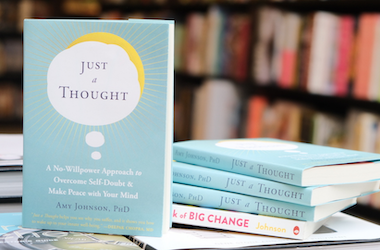
In May, I recorded a podcast episode called How Planning and Playing out Scenarios Distract from Feeling.
I was sharing my hunch that most of the thinking we do–especially in the form of worrying, planning and playing out future scenarios–was learned to help us avoid feeling emotion.
We learn this early. We escape into thought. It feels safer there. And it becomes a habit.
Making matters worse (making the habit stickier), we begin to believe that our thinking serves a purpose. We believe that our thoughts are there to prepare us, that playing out made up scenarios is helpful, that we’re likely to prevent problems if we think a lot.
(I can’t tell you how many people, still today, argue with me that worry is helpful. Worry is never, ever, helpful. It doesn’t prepare you, it paralyzes and limits you. It’s as helpful as reading a fairy tale and believing what you read is true, because that’s essentially what worry is).
It’s looking more and more like worry is a form of disassociation. It’s a way we fall into a habitual fantasyland of things that aren’t happening, at least partially to keep us occupied in our stories rather than in our body.
We stay obsessed with worries, what if scenarios and problems…even our “anxiety problem” or our “worry problem”… as a way to feel safer in the devil we know rather than be fully present in real life.
Look at this for yourself with curiosity and compassion. The habitual worries, complaints, chronic problems that show up for you wouldn’t continue to show up if they didn’t serve some purpose.
What would you have to face without them? What would you have to feel without them?
Of course, you know the punchline. These painful habits are distracting us from something that is actually far less painful than the habits themselves.




















